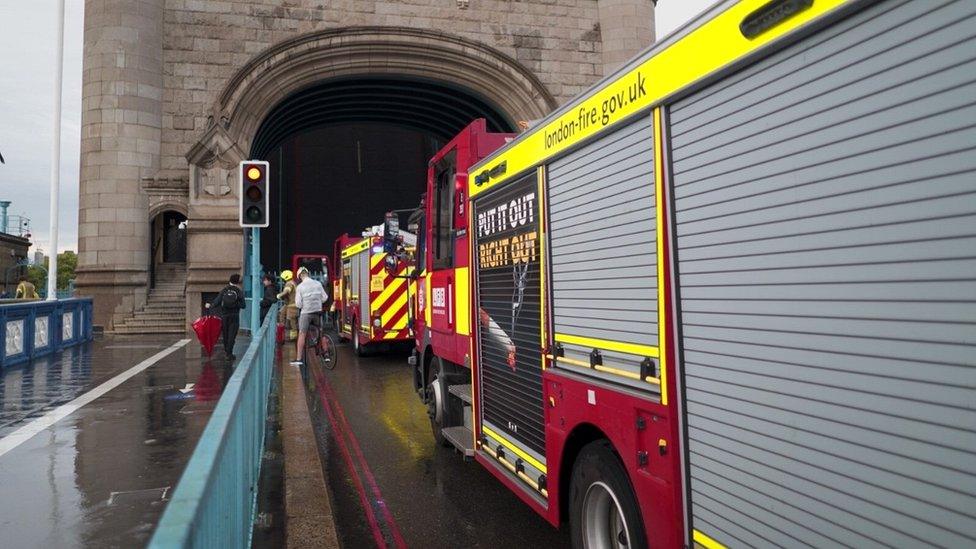London's Tower Bridge reopens after technical failure
- Published

London's Tower Bridge has reopened to traffic after becoming stuck for almost 12 hours.
The famous crossing was scheduled to lift on Monday, external to allow a large wooden tall ship through, but it appeared to become jammed in place.
City of London Police said the 127-year-old landmark was closed "due to technical failure".
The bridge reopened to traffic at 01:45 BST on Tuesday.
Drivers - and pedestrians - had previously been warned to avoid the area.

City of London Police said the bridge had suffered a technical failure

The crossing connects the Square Mile financial district to Southwark.
Approach roads to the bridge were shut while repairs were carried out.
The two sides of the crossing became stuck at about 14:30 BST on Monday.
Transport for London (TfL) reported that traffic had been slow moving on both sides of the river during the afternoon.

Allow X content?
This article contains content provided by X. We ask for your permission before anything is loaded, as they may be using cookies and other technologies. You may want to read X’s cookie policy, external and privacy policy, external before accepting. To view this content choose ‘accept and continue’.

The bridge, which took eight years to build and opened in 1894, normally opens about 800 times every year.
It was previously jammed in August last year when a mechanical fault meant it remained lifted for more than an hour.

Fire crews were called to the scene
A spokesperson for the City of London Corporation, which manages the bridge, said investigations into the failure were taking place but the source of the fault was currently unknown.

Tower Bridge

Construction work began on 22 April 1886 based on a design by City of London architect Sir Horace Jones
It was opened to much celebration by the Prince and Princess of Wales on 30 June 1894
The crossing is formed of two "bascules" which move around an off-centre pivot, external, allowing them to rise (the word bascule is French and can be translated as seesaw)
Steam was originally used to power the bridge but it was converted to electricity in 1976
Upon its completion the bridge was considered the largest and most sophisticated bascule bridge ever made
In 1952 a number 78 bus carrying 20 passengers had to leap from one bascule to the other when the bridge began to rise while it was being driven over